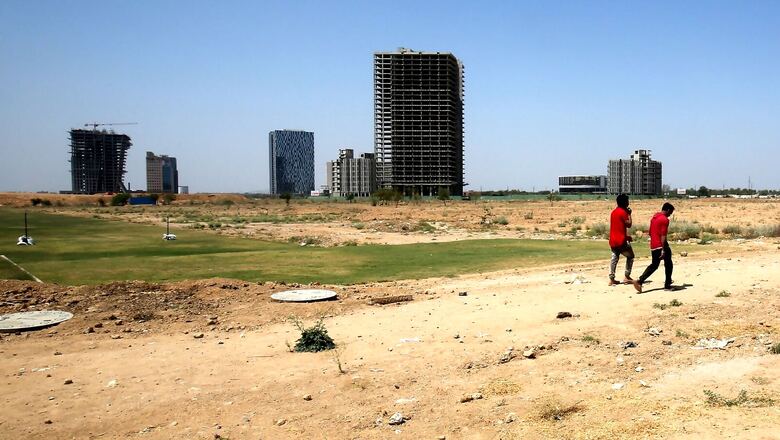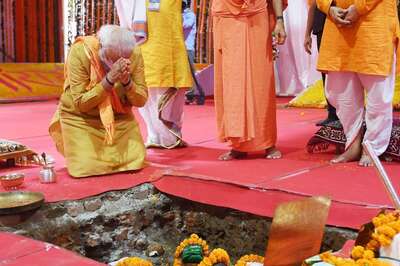
views
The government’s decision to set up National Land Monetisation Corporation (NLMC) to monetise “unused and under-used assets” of Central Public Sector Enterprises (CPSEs), though well-intentioned, is not a good move. For a variety of reasons, as we shall see.
The Cabinet, chaired by Prime Minister Narendra Modi, on March 9 approved NLMC as a wholly owned Government of India company with an initial authorised share capital of Rs 5,000 crore and paid-up share capital of Rs 150 crore. NLMC will undertake monetisation of surplus land and building assets of not just CPSEs but also “other government agencies,” said an official press release. “The proposal is in pursuance of the Budget Announcement for 2021-22.”
The government hopes to generate substantial revenues by monetising unused and under-used non-core assets. At present, CPSEs, also called Central Public Sector Undertakings (CPSUs or PSUs), hold considerable surplus, unused and under-used non-core assets in the nature of land and buildings.
For CPSEs undergoing strategic disinvestment or closure, monetisation of these surplus land and non-core assets is important to unlock their value. For instance, at the time of Air India privatisation, the airline owned land and building, valued at Rs 14,718 crore. It was transferred to the government’s Air India Assets Holding Limited (AIAHL).
Now, the NLMC will support and undertake the monetisation of such assets. “This will also enable productive utilisation of these under-utilised assets to trigger private sector investments, new economic activities, boost local economy and generate financial resources for economic and social infrastructure,” the release said.
The NLMC is expected to own, hold, manage and monetise surplus land and building assets of CPSEs under closure and under strategic disinvestment. This, the government hopes, will speed up both processes, of closure as well as of strategic disinvestment.
In the ongoing CPSEs too, NLMC will undertake surplus land asset monetisation as an agency function. It is expected that NLMC will act as a repository of best practices in land monetisation, assist and provide technical advice to the government in implementation of asset monetisation programme.
Another reason cited for the setting up of NLMC is that it “will have necessary technical expertise to professionally manage and monetise land assets on behalf of CPSEs and other government agencies. The Board of Directors of NLMC will comprise senior central government officers and eminent experts to enable professional operations and management of the company. The Chairman, non-Government Directors of the NLMC will be appointed through a merit-based selection process.”
The move has been necessitated because of the need for a wide range of specialised skills and expertise required for asset monetisation in real estate market research, legal due diligence, valuation, master planning, investment banking, land management, etc., the release said.
It has been decided to hire professionals from the private sector, similar to other specialised government companies like the National Investment and Infrastructure Fund (NIIF) and Invest India, the press release said. “NLMC will be a lean organisation with minimal full-time staff, hired directly from the market on contract basis. Flexibility will be provided to the Board of NLMC to hire, pay and retain experienced professionals from the private sector.”
All this may sound good, but there are many problems with NLMC. To begin with, it militates against the spirit of the philosophy of privatisation that Prime Minister has propounded more than once: the business of government is not business. Setting up a CPSE to help sell or shut down the existing CPSEs doesn’t appear quite congruous.
Second, the privatisation process is 23 years old. Dozens of companies have been sold; in many more, minority stakes have been offloaded. These decisions have been slammed by Opposition parties and challenged in courts, but there has not been a single instance in which the government functionaries have been convicted of illegally selling a CPSE. So, if the existing process has served so well, why try something new?
Third, NLMC may have a turf war with the Department of Investment and Public Asset Management (DIPAM). The four major areas of DIPAM’s work relate to strategic disinvestment, minority stake sales, asset monetisation, and capital restructuring. “It also deals with all matters relating to sale of Central government equity through offer for sale or private placement or any other mode in” CPSEs, says the DIPAM website. Evidently, in the last two areas, DIPAM and NLMC will have overlapping roles.
And, finally, government organs tend to acquire a life of their own. As Milton Friedman famously said, “Nothing is so permanent as a temporary government programme.” The National Anti-Profiteering Authority (NAA) is a case in point. Born in 2017 to ensure that reductions in the goods and services tax (GST) were passed on by the manufacturers to consumers, it was supposed to be wound up in two years. In 2019, however, the NAA got a two-year extension. In September last year, the GST Council again extended its term by one more year.
One only hopes that the setting up of NLMC doesn’t create any problems for the privatisation programme which recently began after decades of inaction.
The author is a freelance journalist. The views expressed in this article are those of the author and do not represent the stand of this publication.
Read all the Latest Opinion News and Breaking News here




















Comments
0 comment